 Search by Keyword
|
"WHAT YOU'RE DOING"
(John Lennon - Paul McCartney)
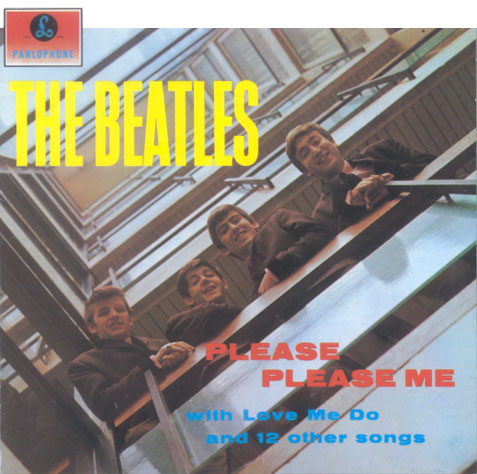 The Beatles had a particular love for the "girl groups" of the early '60s. So much so, in fact, that they decided to record cover songs made popular by girl groups on their early albums. Their first British album "Please Please Me" contained three ("Chains," "Boys" and "Baby It's You") while their second British album "With The Beatles" contained two ("Please Mister Postman" and "Devil In Her Heart"). The Beatles had a particular love for the "girl groups" of the early '60s. So much so, in fact, that they decided to record cover songs made popular by girl groups on their early albums. Their first British album "Please Please Me" contained three ("Chains," "Boys" and "Baby It's You") while their second British album "With The Beatles" contained two ("Please Mister Postman" and "Devil In Her Heart").
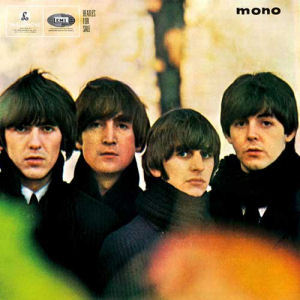 Their next British album to include cover songs was "Beatles For Sale," but they decided to focus primarily on their male rock 'n' roll idols Chuck Berry, Buddy Holly, Little Richard and Carl Perkins (with Dr. Feelgood thrown in for fun). But their love for the 'girl groups' still came through on at least one track. Their next British album to include cover songs was "Beatles For Sale," but they decided to focus primarily on their male rock 'n' roll idols Chuck Berry, Buddy Holly, Little Richard and Carl Perkins (with Dr. Feelgood thrown in for fun). But their love for the 'girl groups' still came through on at least one track.
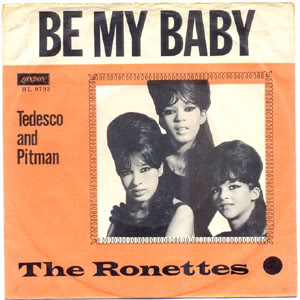 Listen carefully to the arrangement of the Lennon / McCartney composition "What You're Doing." The distinctive drum introduction, said to have been incorporated by the insistence of Paul McCartney, is a direct reference to The Ronettes' #2 debut hit "Be My Baby" from the previous year. "What You're Doing" even reprises the drum beat once again towards the end of the song just as The Ronettes did. This fact testifies to the influence that The Beatles' favorite music had on their songwriting and recording. For those who want to play detective, the discoveries of musical "pinching" in The Beatles cannon may appear to be endless. Listen carefully to the arrangement of the Lennon / McCartney composition "What You're Doing." The distinctive drum introduction, said to have been incorporated by the insistence of Paul McCartney, is a direct reference to The Ronettes' #2 debut hit "Be My Baby" from the previous year. "What You're Doing" even reprises the drum beat once again towards the end of the song just as The Ronettes did. This fact testifies to the influence that The Beatles' favorite music had on their songwriting and recording. For those who want to play detective, the discoveries of musical "pinching" in The Beatles cannon may appear to be endless.
Songwriting History
"We wrote this one in Atlantic City," McCartney explained about the song back in 1964. "It's not that Atlantic City is particularly inspiring, it's just that we happened to have a day off the tour there." This would place the writing of "What You're Doing" between August 30th and September 1st, 1964 during their first full American tour.
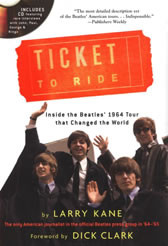 Journalist Larry Kane, in his book "Ticket To Ride," describes this time as "where The Beatles would be spending a few days." He continues, "This stop would provide a chance for them to rest and rev up their engines for the final two-thirds of the tour." The Lafayette Motor Inn on North Carolina Avenue was where they stayed, so this, no doubt, was where the song was written. Larry Kane vividly describes the first day at the hotel, being invited up to The Beatles' suite to witness a line-up of prostitutes in low-cut dresses. "Take your pick" were the words directed to him by John Lennon, which he reportedly declined. Somewhere during this stay, however, they found time to write a couple songs. Journalist Larry Kane, in his book "Ticket To Ride," describes this time as "where The Beatles would be spending a few days." He continues, "This stop would provide a chance for them to rest and rev up their engines for the final two-thirds of the tour." The Lafayette Motor Inn on North Carolina Avenue was where they stayed, so this, no doubt, was where the song was written. Larry Kane vividly describes the first day at the hotel, being invited up to The Beatles' suite to witness a line-up of prostitutes in low-cut dresses. "Take your pick" were the words directed to him by John Lennon, which he reportedly declined. Somewhere during this stay, however, they found time to write a couple songs.
 "'What You're Doing' was a bit of a filler," McCartney recalls in his book "Many Years From Now." "I think it was a little more mine than John's, but I don't have a very clear recollection so to be on the safe side I'd put it as 50-50. It doesn't sound like an idea that I remember John offering, so it sounds like a way to get a song started, some of them are just that. 'Hey, what'cha doing?' You sometimes start a song and hope the best bit will arrive by the time you get to the chorus...but sometimes that's all you get, and I suspect this was one of them. Maybe it's a better recording than it is a song, some of them are. Sometimes a good recording would enhance the song." "'What You're Doing' was a bit of a filler," McCartney recalls in his book "Many Years From Now." "I think it was a little more mine than John's, but I don't have a very clear recollection so to be on the safe side I'd put it as 50-50. It doesn't sound like an idea that I remember John offering, so it sounds like a way to get a song started, some of them are just that. 'Hey, what'cha doing?' You sometimes start a song and hope the best bit will arrive by the time you get to the chorus...but sometimes that's all you get, and I suspect this was one of them. Maybe it's a better recording than it is a song, some of them are. Sometimes a good recording would enhance the song."
As to how much either of them contributed to writing the song, John simply stated in 1980, "His song...I might have done something."
Recording History
"What You're Doing" proved to be the problem child of their British "Beatles For Sale" album. It took them three recording sessions to complete it to everyone's satisfaction, the third session being on the last possible day they could squeeze in before the deadline.
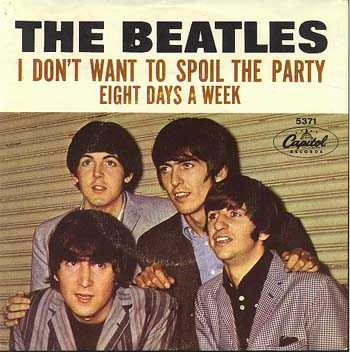 As soon as they returned from their American tour, they premiered the song on September 29th, 1964 in EMI Studio Two. They spent the first four hours this day (2:30 to 6:30 pm) beginning two new songs, "Every Little Thing" and "I Don't Want To Spoil The Party," but didn't finish either one. After a half-hour break, they went back to "I Don't Want To Spoil The Party" and fully completed it. Thereafter, at approximately 9:45 pm, they spent the next hour laying down the rhythm track for "What You're Doing." The last of seven takes was deemed 'best' for the time being, and they planned to finish it off the next day. As soon as they returned from their American tour, they premiered the song on September 29th, 1964 in EMI Studio Two. They spent the first four hours this day (2:30 to 6:30 pm) beginning two new songs, "Every Little Thing" and "I Don't Want To Spoil The Party," but didn't finish either one. After a half-hour break, they went back to "I Don't Want To Spoil The Party" and fully completed it. Thereafter, at approximately 9:45 pm, they spent the next hour laying down the rhythm track for "What You're Doing." The last of seven takes was deemed 'best' for the time being, and they planned to finish it off the next day.
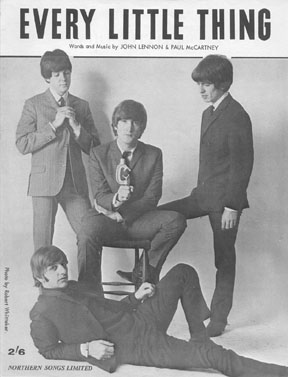 The first thing they chose to tackle the next day (September 30th, 1964) was their song "Every Little Thing," which was completed in the first three hours. After an hour break, they returned to the studio at 6:30 pm with the intention of also completing "What You're Doing." Five additional takes of the song were performed (8 through 12), with "take 11" being deemed best. Whether they considered it complete at this point is not known, but eventually they felt it needed to be scrapped altogether. They were to improve on the arrangement and try again at another time. The first thing they chose to tackle the next day (September 30th, 1964) was their song "Every Little Thing," which was completed in the first three hours. After an hour break, they returned to the studio at 6:30 pm with the intention of also completing "What You're Doing." Five additional takes of the song were performed (8 through 12), with "take 11" being deemed best. Whether they considered it complete at this point is not known, but eventually they felt it needed to be scrapped altogether. They were to improve on the arrangement and try again at another time.
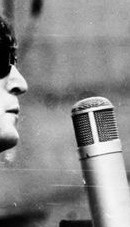 From listening to "take 11," we can see why they felt the song needed further refinement. The characteristic drum pattern, ala The Ronettes, did not exist yet. John awkwardly performed a lower harmony throughout almost the whole song, while the bridge is only heard once instead of twice as we're used to hearing it. The instrumental section is in a raised key and features Harrison playing the distinctive guitar riff in this higher key. A two-second "break" even occurs between the final verse and the conclusion of the song, which they later dropped. They must have been somewhat satisfied with this recording since Paul double-tracked his vocals in the bridge. While this early version would have made an interesting track for the "Anthology 1" set, unfortunately it was overlooked. From listening to "take 11," we can see why they felt the song needed further refinement. The characteristic drum pattern, ala The Ronettes, did not exist yet. John awkwardly performed a lower harmony throughout almost the whole song, while the bridge is only heard once instead of twice as we're used to hearing it. The instrumental section is in a raised key and features Harrison playing the distinctive guitar riff in this higher key. A two-second "break" even occurs between the final verse and the conclusion of the song, which they later dropped. They must have been somewhat satisfied with this recording since Paul double-tracked his vocals in the bridge. While this early version would have made an interesting track for the "Anthology 1" set, unfortunately it was overlooked.
 Some mono mixes were made of completed songs for the new album in the next three weeks, but none was made for "What You're Doing," probably because a decision was made early on that the song needed to be improved upon. With the final deadline for recording the album being October 26th, 1964, the group entered EMI Studio Two on this day to record the last two songs for the album. After being present for some mono and stereo mixing sessions, they first recorded Ringo's contribution to the album, "Honey Don't," from 4:30 to 6:30 pm and then, after an hour break, started from scratch on "What You're Doing." Some mono mixes were made of completed songs for the new album in the next three weeks, but none was made for "What You're Doing," probably because a decision was made early on that the song needed to be improved upon. With the final deadline for recording the album being October 26th, 1964, the group entered EMI Studio Two on this day to record the last two songs for the album. After being present for some mono and stereo mixing sessions, they first recorded Ringo's contribution to the album, "Honey Don't," from 4:30 to 6:30 pm and then, after an hour break, started from scratch on "What You're Doing."
 With new arrangement ideas in place, they worked from 7:30 to approximately 9:00 pm on the song, resulting in takes 13 through 19. Only three of these seven takes were complete, but "take 19" was the keeper. The Beatles all played their usual instruments with vocals, John and George chiming in only on the first word of the first two phrases of each verse, instead of throughout as they had done in the first version. They also perform harmonized "oohs" in the third phrase and then harmonize on the final word "me." With new arrangement ideas in place, they worked from 7:30 to approximately 9:00 pm on the song, resulting in takes 13 through 19. Only three of these seven takes were complete, but "take 19" was the keeper. The Beatles all played their usual instruments with vocals, John and George chiming in only on the first word of the first two phrases of each verse, instead of throughout as they had done in the first version. They also perform harmonized "oohs" in the third phrase and then harmonize on the final word "me."
There were at least two overdubs performed for the song, both having to do with Paul. He double-tracked his vocals throughout the song and then played a piano overdub for the bridge only. Many sources claim the piano was performed by George Martin, but Paul himself clears this up in an interview from 1964. "Ringo does a nice bit of drumming decoration in the introduction, and I double-track on the vocal as well as playing some piano."
 Both the mono and stereo mixes of the song were performed the next day, October 27th, 1964, in the control room of EMI Studio Two by producer George Martin and engineers Norman Smith and Ken Scott. The only noticeable difference between the two is that the drums and rhythm track are somewhat quieter in the stereo mix. Otherwise, both fade-outs are virtually identical. Both the mono and stereo mixes of the song were performed the next day, October 27th, 1964, in the control room of EMI Studio Two by producer George Martin and engineers Norman Smith and Ken Scott. The only noticeable difference between the two is that the drums and rhythm track are somewhat quieter in the stereo mix. Otherwise, both fade-outs are virtually identical.
Song Structure and Style
The general format used on "What You're Doing" was pretty standard fare for Lennon / McCartney songs up to this point, consisting of 'verse/ verse/ bridge/ verse' (or aaba). This is not to say that they were unimaginative with the song's structure, because there are quite a number of surprises along the way, which is also standard fare for The Beatles. They throw in an interesting introduction, an instrumental section, a repeat of the bridge and third verse, and an equally interesting conclusion with fade-out.
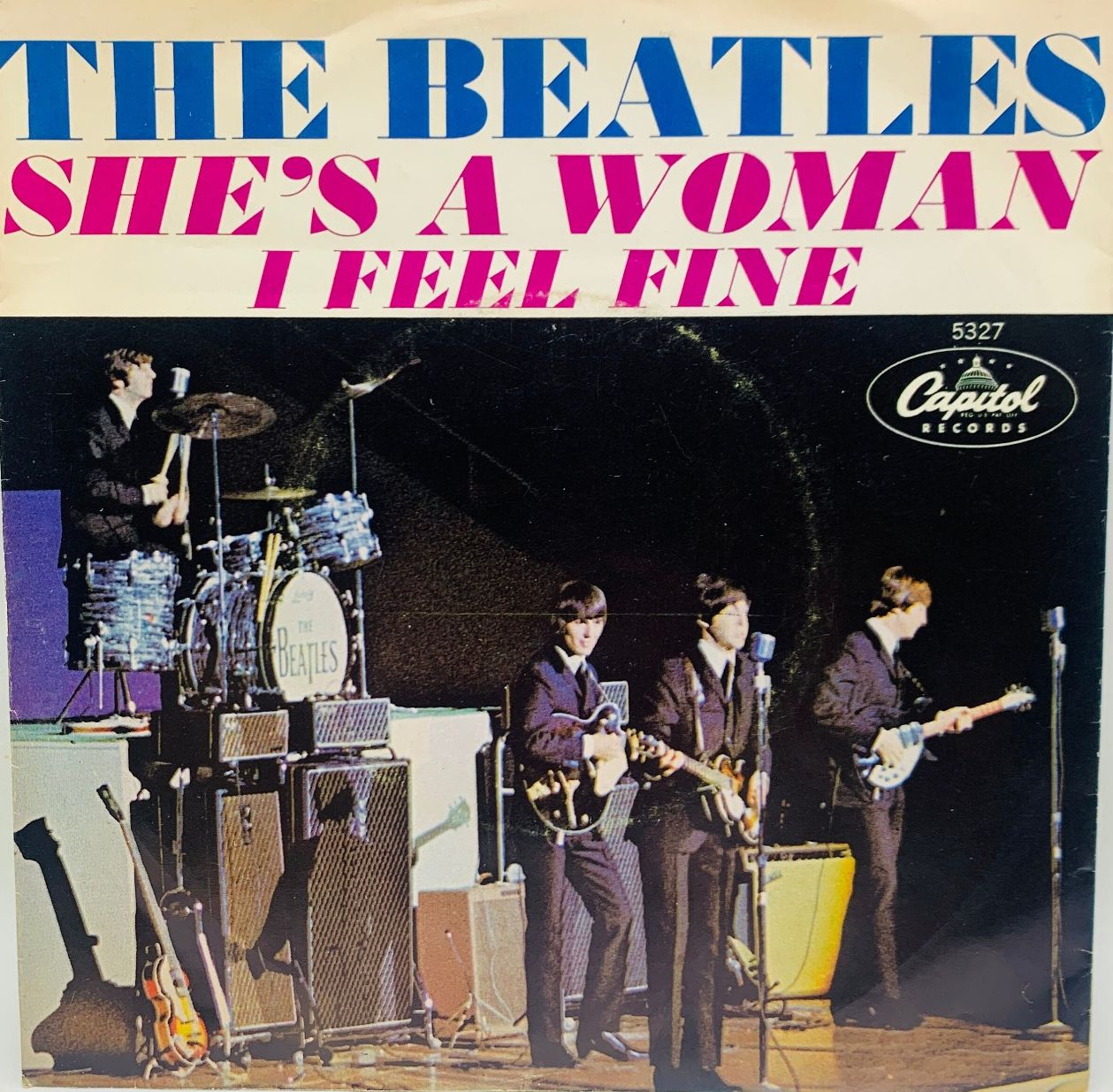 I like to think of the first version of the song The Beatles recorded in September of that year as the unadulterated structural ideas formed by the group themselves. Although this earlier arrangement was precise and well-thought-out, it was loosely performed. While this loose concept worked well for "She's A Woman," which was recorded about a week later, the pop format found in "What You're Doing" needed further refinement to bring it to the concise, defined performance that was required in order for it to be convincing. The finished product, as we have all become acquainted with, was no doubt created under the scrupulous instruction of producer George Martin, who knew all too well what it takes to make a song sound good. I like to think of the first version of the song The Beatles recorded in September of that year as the unadulterated structural ideas formed by the group themselves. Although this earlier arrangement was precise and well-thought-out, it was loosely performed. While this loose concept worked well for "She's A Woman," which was recorded about a week later, the pop format found in "What You're Doing" needed further refinement to bring it to the concise, defined performance that was required in order for it to be convincing. The finished product, as we have all become acquainted with, was no doubt created under the scrupulous instruction of producer George Martin, who knew all too well what it takes to make a song sound good.
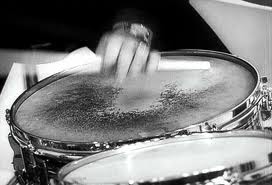 The eight-measure introduction is divided into two parts, the first four measures taken up by Ringo's bass and snare drum rhythm (ala the Ronettes' "Be My Baby). We actually can detect Lennon thumping the same beat on his acoustic guitar during the third and fourth measures. Then, directly on the one-beat of the fifth measure, the rest of the band joins in for the final four measures of the introduction. While Ringo continues this exact drum rhythm, George introduces his two-measure guitar riff that is played twice to fill out this section of the song. John and Paul also come in on their acoustic guitar and bass, respectively, pivoting back and forth between the D (the home key of the song) and G chords. The end of the introduction is marked by Ringo going into a usual steady drum pattern with closed hi-hat. The eight-measure introduction is divided into two parts, the first four measures taken up by Ringo's bass and snare drum rhythm (ala the Ronettes' "Be My Baby). We actually can detect Lennon thumping the same beat on his acoustic guitar during the third and fourth measures. Then, directly on the one-beat of the fifth measure, the rest of the band joins in for the final four measures of the introduction. While Ringo continues this exact drum rhythm, George introduces his two-measure guitar riff that is played twice to fill out this section of the song. John and Paul also come in on their acoustic guitar and bass, respectively, pivoting back and forth between the D (the home key of the song) and G chords. The end of the introduction is marked by Ringo going into a usual steady drum pattern with closed hi-hat.
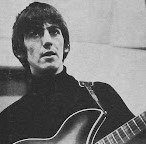 The first verse, which is an interesting nine measures long, can best be analyzed by dividing it up into four sections. The first, second and fourth sections continue the pivot between the chords D and G while George's guitar riff (quieter in the mix in order to highlight the vocals) continues to be repeated in the background. Each of these sections begins with John and George belting out the word that Paul is singing as lead vocalist, in this case being the words "look," "I'm" and "me." Each of these sections is two measures long. The first verse, which is an interesting nine measures long, can best be analyzed by dividing it up into four sections. The first, second and fourth sections continue the pivot between the chords D and G while George's guitar riff (quieter in the mix in order to highlight the vocals) continues to be repeated in the background. Each of these sections begins with John and George belting out the word that Paul is singing as lead vocalist, in this case being the words "look," "I'm" and "me." Each of these sections is two measures long.
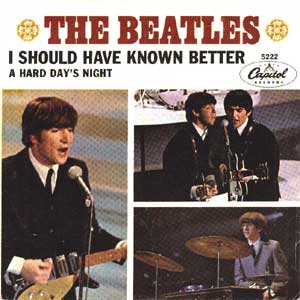 The unique section of the verse is the third, which comprises an odd three measures. This section is different in many different ways. The pivoting D and G chords are put aside and replaced by B minor for the first measure and G for the second and third measure. John and George harmonize "oohs" through this section, while Paul continues lead vocals. George also sets aside his guitar riff for some rhythm guitar stabs. Although this additional three-measure section makes the verse unsymmetrical, the usual Beatles verse having an even number of measures as did most pop music at that time, the delivery is convincing enough that nobody notices. This trick was actually more usual for Lennon compositions even for 1964 as evidenced by the nine-measure verse of "I Should Have Known Better." The unique section of the verse is the third, which comprises an odd three measures. This section is different in many different ways. The pivoting D and G chords are put aside and replaced by B minor for the first measure and G for the second and third measure. John and George harmonize "oohs" through this section, while Paul continues lead vocals. George also sets aside his guitar riff for some rhythm guitar stabs. Although this additional three-measure section makes the verse unsymmetrical, the usual Beatles verse having an even number of measures as did most pop music at that time, the delivery is convincing enough that nobody notices. This trick was actually more usual for Lennon compositions even for 1964 as evidenced by the nine-measure verse of "I Should Have Known Better."
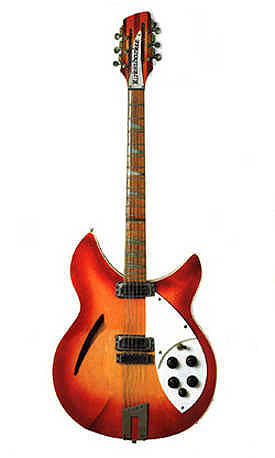 The second verse follows this exact pattern except for one major difference. It goes directly into a bridge and therefore is only eight measures long instead of nine, the last measure being chopped off. This is to keep the pivoting chord pattern of D to G in place. The bridge begins in G and the verse usually ends in G, so they viewed the last measure of the verse as not needed. This being the case, George had to also chop off the second half of his guitar riff when the bridge starts. The second verse follows this exact pattern except for one major difference. It goes directly into a bridge and therefore is only eight measures long instead of nine, the last measure being chopped off. This is to keep the pivoting chord pattern of D to G in place. The bridge begins in G and the verse usually ends in G, so they viewed the last measure of the verse as not needed. This being the case, George had to also chop off the second half of his guitar riff when the bridge starts.
The eight-measure bridge adds a nice change of pace to the song's structure. Paul sings this section solo throughout, while George gives us a break from the repeated guitar riff by joining John in a rhythm guitar role. The whole band gives us a climatic "beatles break" for the seventh and eighth measures by letting the A chord ring out, allowing Paul's eight-note word "me" to fill the entire gap. Ringo gives a small drum fill on the last beat of the final measure to bring in the rest of the band for the third verse.
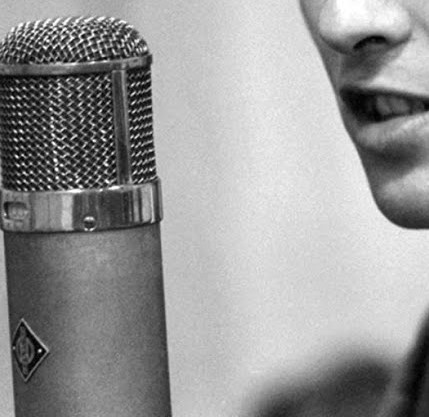 The third verse goes back to the usual nine-measure structure of the first verse but with a whole new set of lyrics. Many times Lennon and McCartney just repeated the first verse again at this point, but they felt strongly enough about the song to give this one its own third verse. An interesting feature of this verse is the background vocal flubs of either John or George (or both). Someone got the lyrics to the second and third verses mixed up and belted out the wrong first words to the first two lines of the verse. Instead of shouting "please," they shouted "you," and then instead of yelling "you," they yelled "and." Since it was the last possible day for recording the song before the deadline was up, they apparently thought it was good enough. The third verse goes back to the usual nine-measure structure of the first verse but with a whole new set of lyrics. Many times Lennon and McCartney just repeated the first verse again at this point, but they felt strongly enough about the song to give this one its own third verse. An interesting feature of this verse is the background vocal flubs of either John or George (or both). Someone got the lyrics to the second and third verses mixed up and belted out the wrong first words to the first two lines of the verse. Instead of shouting "please," they shouted "you," and then instead of yelling "you," they yelled "and." Since it was the last possible day for recording the song before the deadline was up, they apparently thought it was good enough.
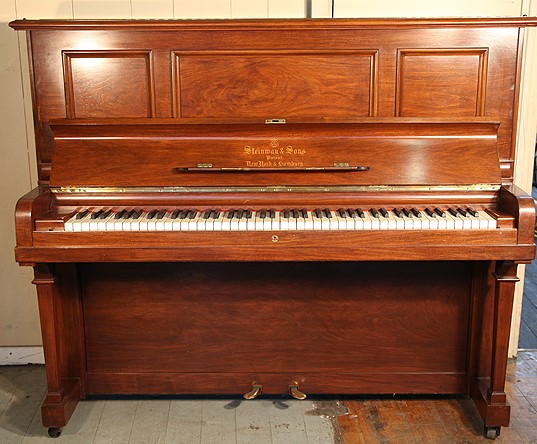 The instrumental section of the song is next, which follows the pattern of a verse but, because it is followed by a repeat of the bridge, is also cut short to eight measures. As well performed as George's guitar solo is, Paul's barrelhouse piano work appears here for the first time in the song and is played as a distinctive backdrop to the guitar solo. The rumbling style of piano playing is also to be heard by Paul and George Martin four months later on George Harrison's "You Like Me Too Much." The instrumental section of the song is next, which follows the pattern of a verse but, because it is followed by a repeat of the bridge, is also cut short to eight measures. As well performed as George's guitar solo is, Paul's barrelhouse piano work appears here for the first time in the song and is played as a distinctive backdrop to the guitar solo. The rumbling style of piano playing is also to be heard by Paul and George Martin four months later on George Harrison's "You Like Me Too Much."
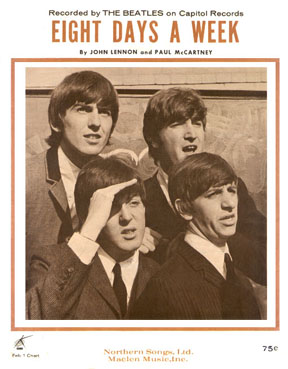 After an identical repeat of the bridge, the third verse is then repeated, although this time the background vocalists get the words right. Another difference with this repeat of the third verse is how it is extended to thirteen measures this time around. The reason this is done is to repeat the key lyrical phrase of the song three times, as was their habit in recently recorded songs (see "Eight Days A Week" and "I Feel Fine"). After an identical repeat of the bridge, the third verse is then repeated, although this time the background vocalists get the words right. Another difference with this repeat of the third verse is how it is extended to thirteen measures this time around. The reason this is done is to repeat the key lyrical phrase of the song three times, as was their habit in recently recorded songs (see "Eight Days A Week" and "I Feel Fine").
A conclusion is then added afterward, which is heard as ten measures long although it was faded out, thus giving the impression of going on indefinitely. This is meant as a reprise of the introduction, although there are a few notable differences. The distinctive drum rhythm is returned to as heard by itself in the introduction, but after the first two measures are played, Paul adds a high A note on the bass guitar during the next two measures. As the band kicks in on the fifth measure, Paul also brings in a return of his rumbling piano chords to round out the song as it fades out. George, of course, keeps his two-measure guitar riff going, to leave the final impression of the song forever playing through our heads after it is long over.
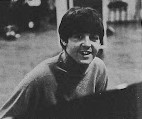 Paul is definitely "center stage" on this song, with his double-tracked vocals and highly mixed bass guitar work. In fact, this song is an early example of The Beatles taxing the recording equipment at EMI to the limit as they were to continue doing as their career progressed. The Beatles habitually complained early on that the bass wasn't loud enough in their recordings, so they got their way this time around. The brash sound of George's guitar work on this track is also evidence of them deliberately overloading the recording consoles. Paul is definitely "center stage" on this song, with his double-tracked vocals and highly mixed bass guitar work. In fact, this song is an early example of The Beatles taxing the recording equipment at EMI to the limit as they were to continue doing as their career progressed. The Beatles habitually complained early on that the bass wasn't loud enough in their recordings, so they got their way this time around. The brash sound of George's guitar work on this track is also evidence of them deliberately overloading the recording consoles.
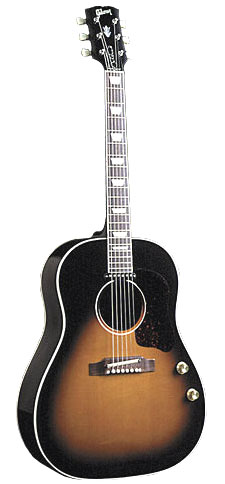 George's guitar work is well defined and rehearsed, displaying the classic two-measure guitar riff that has and will become synonymous with many of The Beatles best known songs, such as "I Feel Fine," "You Can't Do That," "Day Tripper" and "Paperback Writer." John wisely chose to convert to his Gibson acoustic guitar instead of his Rickenbacker electric as heard in the first version, which adds a "folky" element to the song. His shouting background vocals in the verses may be his comedic protest to the rejection of the background vocals he awkwardly performed in the early version of the song. And Ringo did his usual steady and dependable job on the drums, cooperating fully with the suggestion of him providing "drumming decoration," as Paul described it in interview. George's guitar work is well defined and rehearsed, displaying the classic two-measure guitar riff that has and will become synonymous with many of The Beatles best known songs, such as "I Feel Fine," "You Can't Do That," "Day Tripper" and "Paperback Writer." John wisely chose to convert to his Gibson acoustic guitar instead of his Rickenbacker electric as heard in the first version, which adds a "folky" element to the song. His shouting background vocals in the verses may be his comedic protest to the rejection of the background vocals he awkwardly performed in the early version of the song. And Ringo did his usual steady and dependable job on the drums, cooperating fully with the suggestion of him providing "drumming decoration," as Paul described it in interview.
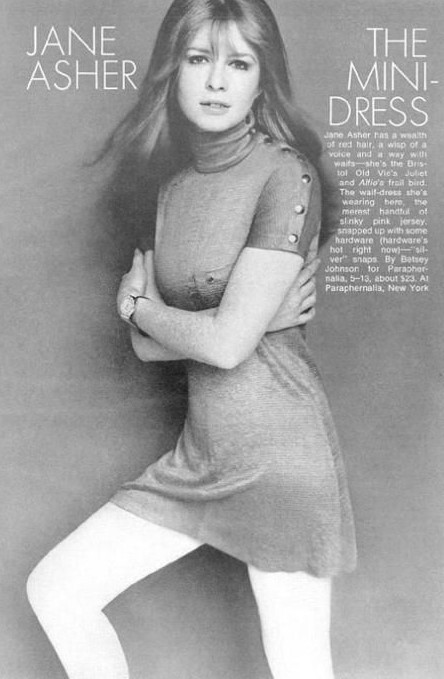 It has been assumed by many authors that the lyrics to this song are autobiographical, depicting Paul's current relationship with then-girlfriend Jane Asher. While there may be truth to this, it has never been confirmed by Paul himself. While his and John's lyrics were beginning to take on more of a personal nature at this stage, Paul continued to write lyrics throughout the Beatle years by projecting himself into a fictional situation. Although signs of strain in their relationship are admitted by Paul to be the inspiration behind "I'm Looking Through You" and "We Can Work It Out," "What You're Doing" may be more fictional than most think. It has been assumed by many authors that the lyrics to this song are autobiographical, depicting Paul's current relationship with then-girlfriend Jane Asher. While there may be truth to this, it has never been confirmed by Paul himself. While his and John's lyrics were beginning to take on more of a personal nature at this stage, Paul continued to write lyrics throughout the Beatle years by projecting himself into a fictional situation. Although signs of strain in their relationship are admitted by Paul to be the inspiration behind "I'm Looking Through You" and "We Can Work It Out," "What You're Doing" may be more fictional than most think.
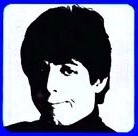 For instance, the singer in this song is clearly the victim of a lover who is not attentive to his needs, even accusing her of "lying," which is causing his "crying." The incredibly hectic schedule Paul was involved with, including his philandering with other woman (even prostitutes) during the time the song was written, is not in harmony with his depiction of the singer "waiting here for you, wondering what you're gonna do." And, Paul surely couldn't personally offer the girl "a love that's true," as he does in the song. For instance, the singer in this song is clearly the victim of a lover who is not attentive to his needs, even accusing her of "lying," which is causing his "crying." The incredibly hectic schedule Paul was involved with, including his philandering with other woman (even prostitutes) during the time the song was written, is not in harmony with his depiction of the singer "waiting here for you, wondering what you're gonna do." And, Paul surely couldn't personally offer the girl "a love that's true," as he does in the song.
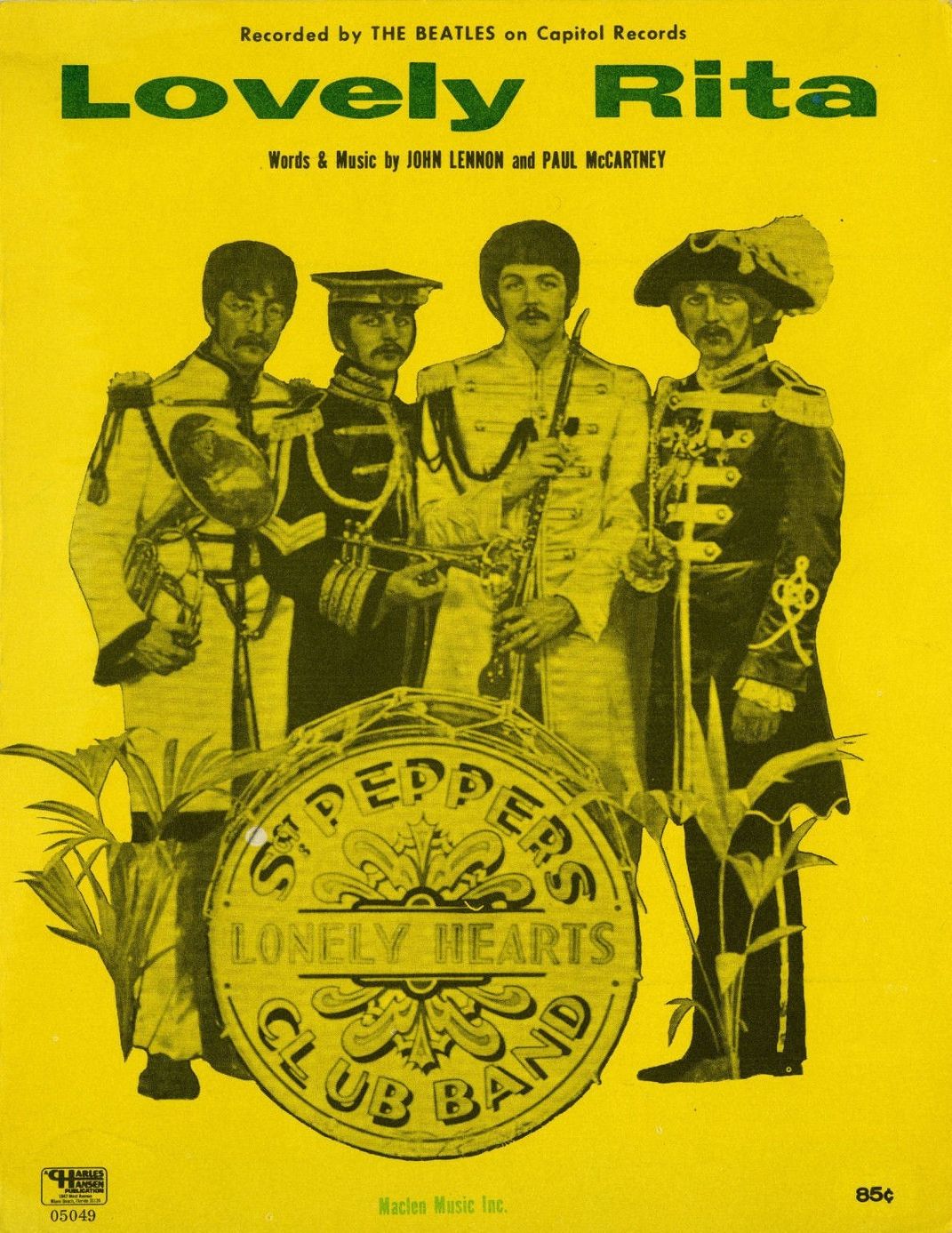 Clever lyric writing is on display, though, with rhymes like "what you're doin'" with "feeling blue'n lonely" in the first verse. The second verse repeats this gimmick with rhyming "got me runnin'" with "there's no fun in it." The third verse shows the composers a little lazy, just rhyming "lying" and "crying," in the same places, but maybe they shouldn't have continued the gimmick any further anyway. Both McCartney and Lennon liked these little rhyming games and added them whenever they could, such as "tried to win 'er" and "over dinner" in the song "Lovely Rita." Clever lyric writing is on display, though, with rhymes like "what you're doin'" with "feeling blue'n lonely" in the first verse. The second verse repeats this gimmick with rhyming "got me runnin'" with "there's no fun in it." The third verse shows the composers a little lazy, just rhyming "lying" and "crying," in the same places, but maybe they shouldn't have continued the gimmick any further anyway. Both McCartney and Lennon liked these little rhyming games and added them whenever they could, such as "tried to win 'er" and "over dinner" in the song "Lovely Rita."
American Releases
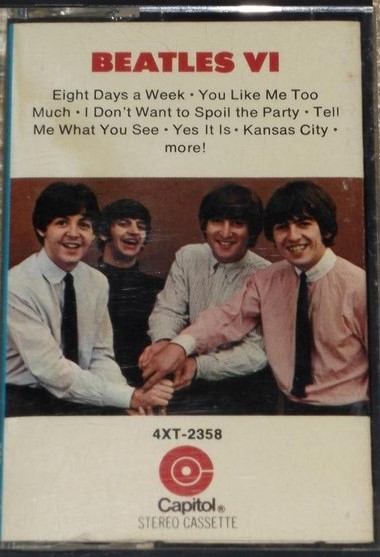 America first heard the seven-and-a-half month old song on June 14th, 1965 as the opening track of side two on the Capitol album "Beatles VI." Since it originally appeared as the next-to-last song on the British album "Beatles For Sale," this was a much more flattering and noticeable placement in the track list on this #1 million-selling album. "Beatles VI" was then released on compact disc on January 21st, 2014, both the mono and stereo versions of the album contained on one CD. America first heard the seven-and-a-half month old song on June 14th, 1965 as the opening track of side two on the Capitol album "Beatles VI." Since it originally appeared as the next-to-last song on the British album "Beatles For Sale," this was a much more flattering and noticeable placement in the track list on this #1 million-selling album. "Beatles VI" was then released on compact disc on January 21st, 2014, both the mono and stereo versions of the album contained on one CD.
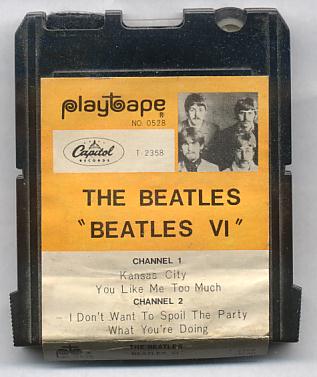 Sometime in 1967, Capitol released Beatles music on a brand new but short-lived format called "Playtapes." These tape cartridges did not have the capability to include entire albums, so two seperate truncated four-song versions of "Beatles VI" were released in this portable format, "What You're Doing" being on one of them. These "Playtapes" are highly collectable today. Sometime in 1967, Capitol released Beatles music on a brand new but short-lived format called "Playtapes." These tape cartridges did not have the capability to include entire albums, so two seperate truncated four-song versions of "Beatles VI" were released in this portable format, "What You're Doing" being on one of them. These "Playtapes" are highly collectable today.
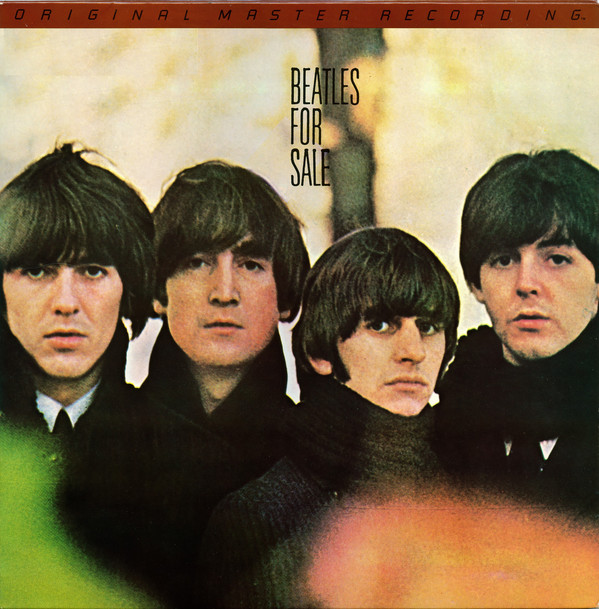 The first time the original British "Beatles For Sale" album was made available in the US was the "Original Master Recording" vinyl edition released through Mobile Fidelity Sound Lab in February of 1987. This album included "What You're Doing" and was prepared utilizing half-speed mastering technology from the original master tape on loan from EMI. This version of the album was only available for a short time and is quite collectible today. The first time the original British "Beatles For Sale" album was made available in the US was the "Original Master Recording" vinyl edition released through Mobile Fidelity Sound Lab in February of 1987. This album included "What You're Doing" and was prepared utilizing half-speed mastering technology from the original master tape on loan from EMI. This version of the album was only available for a short time and is quite collectible today.
 February 26th, 1987 was the next release of the song on the official US compact disc release of the British "Beatles For Sale" album, a vinyl edition coming out on July 21st, 1987. These mono only releases were then remastered in stereo, the CD version coming out on September 9th, 2009 and the vinyl edition being released on November 13th, 2012. February 26th, 1987 was the next release of the song on the official US compact disc release of the British "Beatles For Sale" album, a vinyl edition coming out on July 21st, 1987. These mono only releases were then remastered in stereo, the CD version coming out on September 9th, 2009 and the vinyl edition being released on November 13th, 2012.
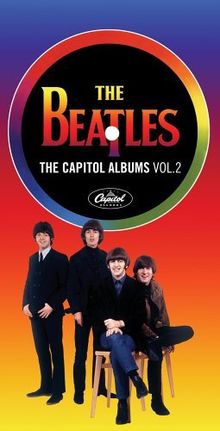 America got its first stereo CD release of the song on the April 11th, 2006 box set entitled "The Capitol Albums, Vol. 2." The set included all four Capitol Beatles albums released in 1965 in both stereo and mono pretty much as originally heard back then. The entire "Beatles VI" album is contained therein, along with "The Early Beatles," the "Help!" Soundtrack and "Rubber Soul." For initial pressings of this set, Capitol mistakenly presented a "mono type-B" fold-down mono mix for the entire "Beatles VI" album, which was a method that combined both the left and right channels of the stereo mix to create a mono mix. Therefore, the mono mix of "What You're Doing" in this set was initially prepared in this way, the error being corrected on subsequent pressings. America got its first stereo CD release of the song on the April 11th, 2006 box set entitled "The Capitol Albums, Vol. 2." The set included all four Capitol Beatles albums released in 1965 in both stereo and mono pretty much as originally heard back then. The entire "Beatles VI" album is contained therein, along with "The Early Beatles," the "Help!" Soundtrack and "Rubber Soul." For initial pressings of this set, Capitol mistakenly presented a "mono type-B" fold-down mono mix for the entire "Beatles VI" album, which was a method that combined both the left and right channels of the stereo mix to create a mono mix. Therefore, the mono mix of "What You're Doing" in this set was initially prepared in this way, the error being corrected on subsequent pressings.
Just prior to the release of the above box set, Capitol distributed a promotional CD sampler to radio stations that contained both the stereo and mono mixes of “What You’re Doing.” This is quite a rare find today.
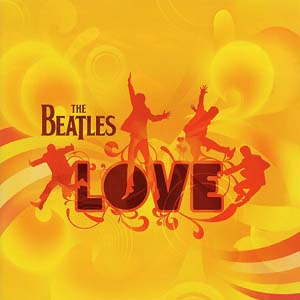 Not to be forgotten is the November 20th, 2006 release "Love" which featured the track in a very unique medley with two other Beatles songs that happened to be in the same key. Producers George and Giles Martin skillfully melded these songs in a track they titled "Drive My Car"/"The Word"/"What You're Doing," throwing in the guitar solo from "Taxman" just for fun. This masterpiece is one of the true highlights of this Grammy-winning album, which was created as a soundtrack for the Cirque du Soleil show of the same name. Not to be forgotten is the November 20th, 2006 release "Love" which featured the track in a very unique medley with two other Beatles songs that happened to be in the same key. Producers George and Giles Martin skillfully melded these songs in a track they titled "Drive My Car"/"The Word"/"What You're Doing," throwing in the guitar solo from "Taxman" just for fun. This masterpiece is one of the true highlights of this Grammy-winning album, which was created as a soundtrack for the Cirque du Soleil show of the same name.
 On September 9th, 2009, the CD box set “The Beatles In Mono” was released, which features the entire mono Beatles catalog in a stunning remastered condition. The original 1964 mono mix of “What You’re Doing” is contained therein, the vinyl edition of this box set being first released on September 9th, 2014. On September 9th, 2009, the CD box set “The Beatles In Mono” was released, which features the entire mono Beatles catalog in a stunning remastered condition. The original 1964 mono mix of “What You’re Doing” is contained therein, the vinyl edition of this box set being first released on September 9th, 2014.
Live Performances
"What You're Doing" was apparently the lowest of priorities when it came to live performances, so it never appeared in any set list or any television or BBC radio show. McCartney never thought to include it in any later Wings or solo tours either.
Conclusion
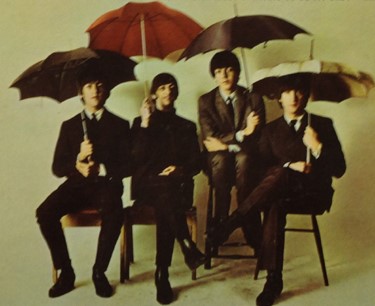 By late 1964, it was obvious to all that The Beatles had hit songwriting down to a craft. While neither Paul nor John held this song in very high esteem, as indicated in personal interviews, "What You're Doing" was anything but just "album filler." It had all the components of a hit song, including a catchy guitar riff, strategically placed emphasis of the song's title at the end of the verses, a repeat of the lyrical catch phrase at the song's conclusion, and even the trademark "beatles break" as heard in a lot of their hit singles. Tender loving care was also given to the arrangement, with its well-rehearsed guitar solo, the well-executed piano overdub, the double-tracked lead vocals and the distinctive drum rhythm in the introduction. The song may not make anyone's "Top 10 favorite Beatles songs" list, but it shows that, even when they were in a time crunch, they were on top of their game. By late 1964, it was obvious to all that The Beatles had hit songwriting down to a craft. While neither Paul nor John held this song in very high esteem, as indicated in personal interviews, "What You're Doing" was anything but just "album filler." It had all the components of a hit song, including a catchy guitar riff, strategically placed emphasis of the song's title at the end of the verses, a repeat of the lyrical catch phrase at the song's conclusion, and even the trademark "beatles break" as heard in a lot of their hit singles. Tender loving care was also given to the arrangement, with its well-rehearsed guitar solo, the well-executed piano overdub, the double-tracked lead vocals and the distinctive drum rhythm in the introduction. The song may not make anyone's "Top 10 favorite Beatles songs" list, but it shows that, even when they were in a time crunch, they were on top of their game.
Song Summary
"What You're Doing"
Written by: John Lennon / Paul McCartney
Instrumentation (most likely):
- Paul McCartney - Lead Vocals, Bass Guitar (1963 Hofner 500/1), Piano (1905 Steinway Vertegrand upright)
- John Lennon - Rhythm Guitar (1964 Gibson J-160E), Harmony Vocals
- George Harrison - Lead Guitar (1963 Rickenbacker 360-12), Harmony Vocals
- Ringo Starr - Drums (1964 Ludwig Super Classic Black Oyster Pearl)
Written and compiled by Dave Rybaczewski
|
IF YOU WOULD LIKE TO MAKE A DONATION TO KEEP THIS WEBSITE UP AND RUNNING, PLEASE CLICK BELOW!
Sign Up Below for our MONTHLY BEATLES TRIVIA QUIZ!
|